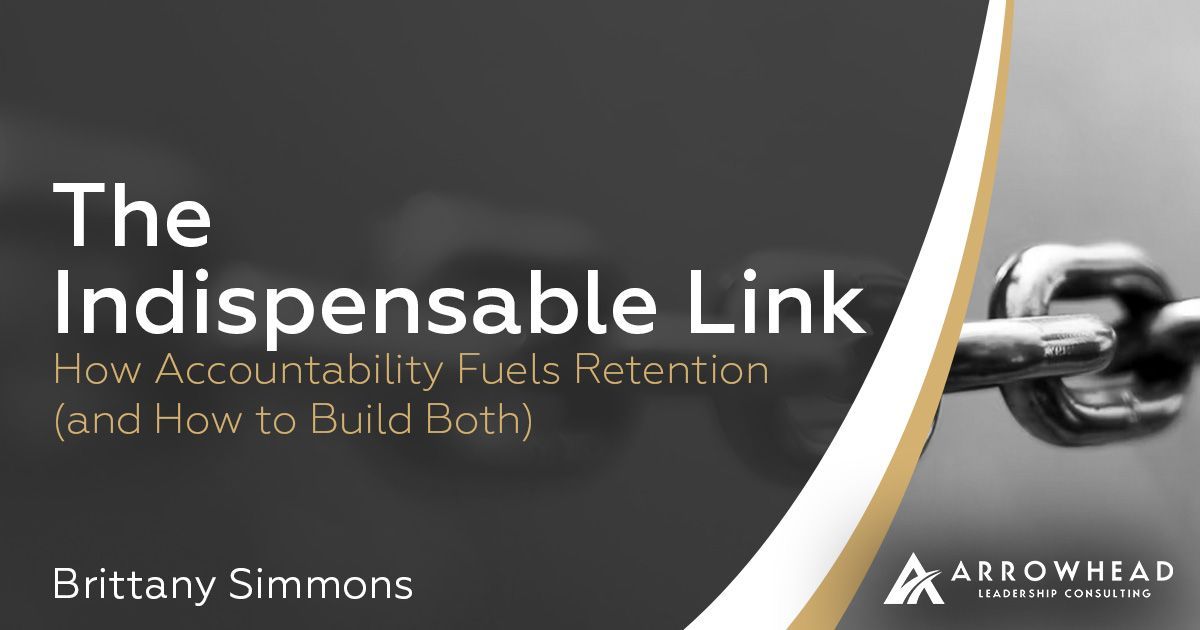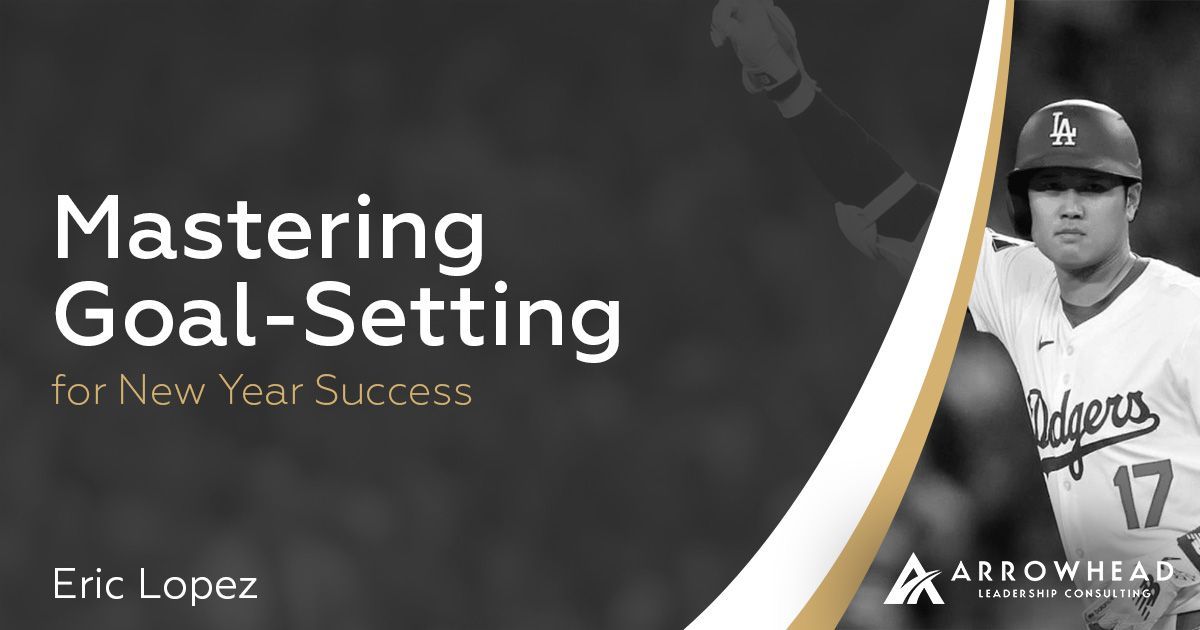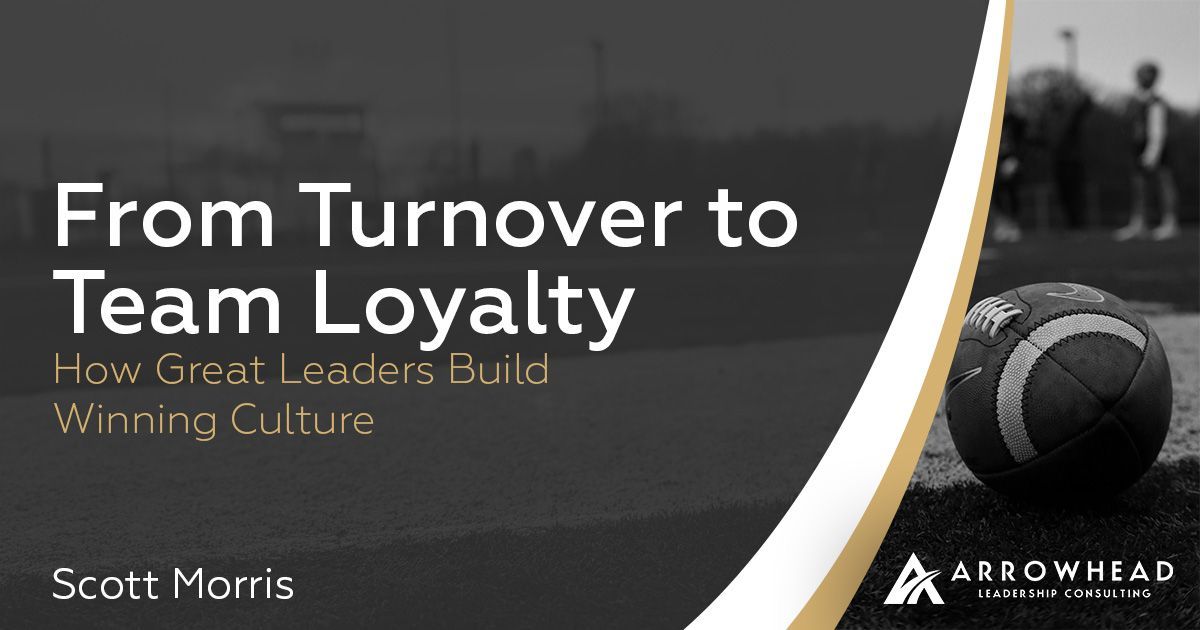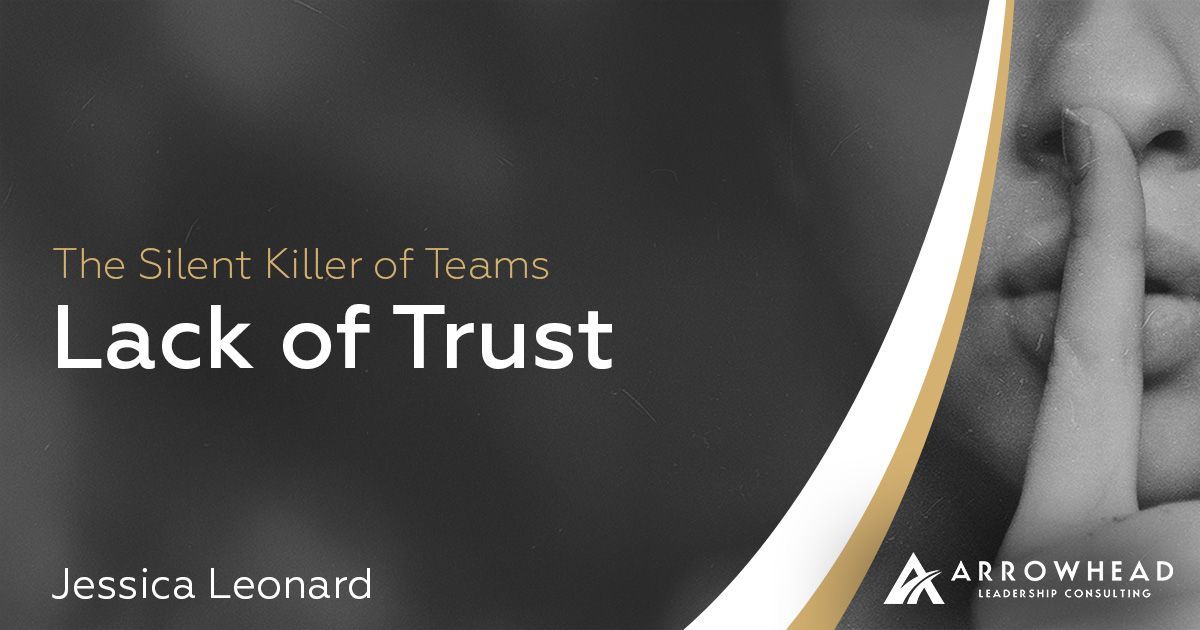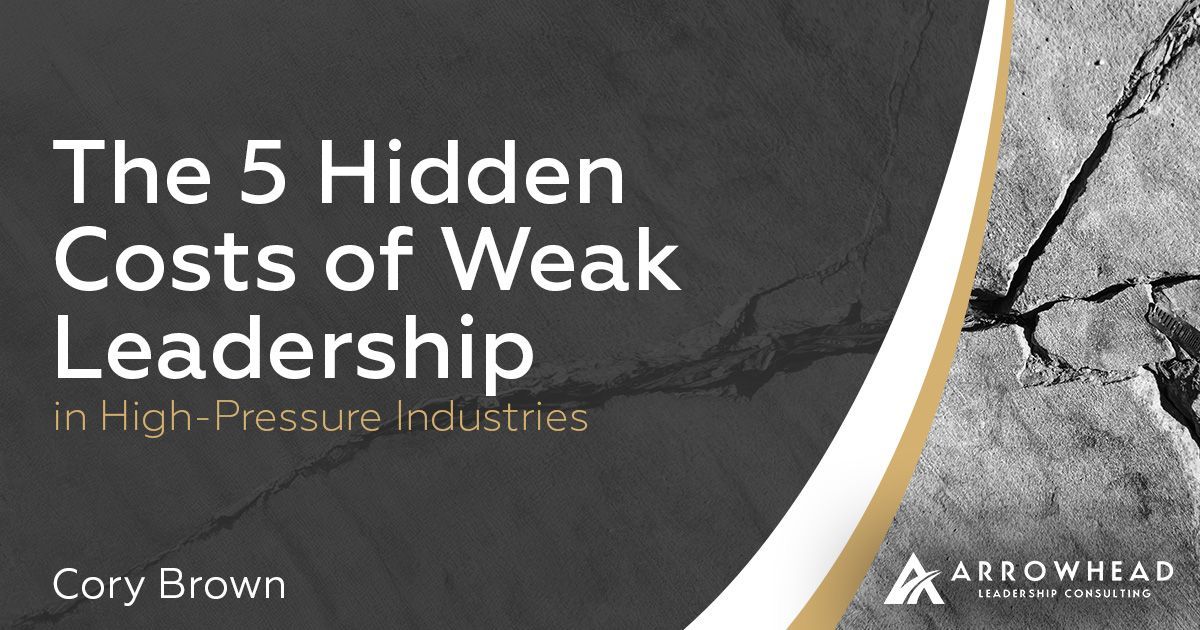The Accountability Cycle
Alleviate Unmet Expectations

What is the #1 cause of frustration and friction you encounter as an organizational leader? We believe the answer centers on “unmet expectations.” We have observed a common 4-step cycle when companies hire new employees and begin setting expectations. The cycle follows like this:
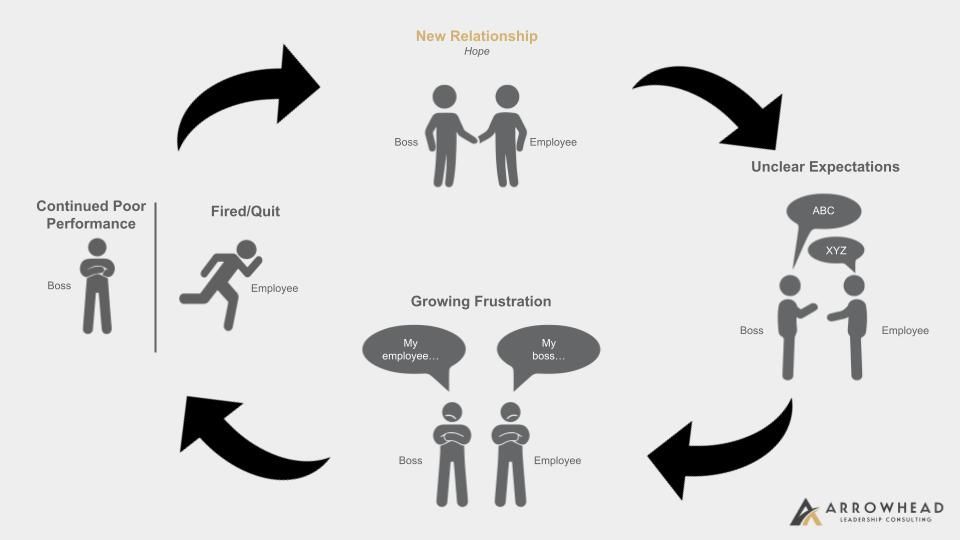
Step 1: Hope. After a new hire, the supervisor is hopeful the new employee will fulfill their assigned role perfectly, and the employee is excited about their new job.
Step 2: Unclear expectations. Rarely does the supervisor take the time to engage the new employee and deliver a clear duty description with roles and responsibilities. Despite not delivering clear expectations, the supervisor is sure that the employee understands their expectation of “A, B, C,” but often the employee has a very different picture of the expectations and believes their job entails “X, Y, Z.” Thus, they quickly transition to the next step.
Step 3: Frustration. The supervisor grumbles, “My darn employee won’t do their job!” While the employee complains, “My boss is a toxic leader!” This leads to a critical decision in Step 4.
Step 4: Fire/Quit/Tolerate. The supervisor fires the employee. The employee quits. Or, they maintain the work relationship, but the team suffers due to suboptimal performance.
A healthy 4-step cycle looks like this:
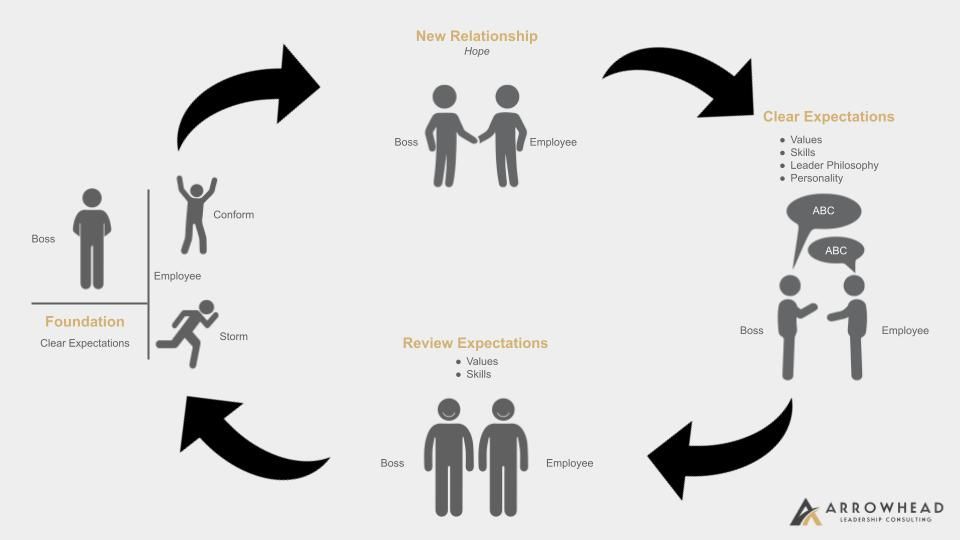
Step 1: Hope. This remains the same.
Step 2: Clear Expectations. The supervisor sits down with the employee and gets to know them during onboarding. They both share their backgrounds, hobbies, families, goals, and strengths/weaknesses. The supervisor asks, “What are your expectations of me as your supervisor?” The supervisor creates an environment of caring engagement and open communication. Only when this is complete, does the supervisor clearly lay out the expectations for the employee in the form of 1) Company Values, 2) Required Skills, and 3) Roles and Responsibilities 4) Goals/Key Performance Indicators.
Step 3: Review Standards. The supervisor regularly sits down with the employee and reviews these agreed upon standards. The supervisor praises the employee for areas of compliance, holds them accountable for areas of non-compliance, and helps the employee solve problems and develop in their role.
Step 4: Conform or Leave. The supervisor is on a firm foundation, and the employee chooses to either conform to the clear standards or leave the team.
This healthy cycle is vital to solving two critical aspects of organizational leadership. The first of which is building culture. The values that the supervisor describes to the employee are the desired cultural values of the company. Relaying the importance of these at the outset and routinely reinforcing them is essential to building the company’s desired culture. The second aspect is that of holding people accountable. The clear initial discussion and following one-on-ones minimize emotions from the equation and make holding someone accountable a much easier and feasible endeavor.
Looking for more leadership concepts and tools? Take our GET STARTED QUIZ to see what Arrowhead Leadership can offer you and your team!
Arrowhead Leadership Blog
